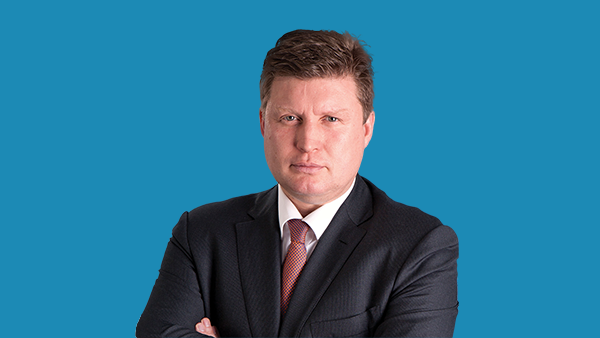This is the fifth part in a series of contributions focused on analyzing Vietnam’s current key transfer pricing regulation Decree 132[1] from the perspective of the 2022 Transfer Pricing Guidelines (“TPG”) of the Organization for Economic Cooperation and Development (“OECD”).
In which situations should the CUP method be used?
Both the OECD TPG and Decree 132 cite some examples of business situations which fit the CUP transfer pricing method. This comparative table provides an overview for the situations referred to with the CUP method.
| Example situations for the CUP method cited in | ||
|---|---|---|
| Vietnam Decree 132[2] | Comparable reference in TPG | |
| 1 | “Any type of products or tangible goods that are commonly transacted, traded on the market or which has prices published on domestic or international exchanges of goods and services” | The OECD refers to “transfer of commodities between associated enterprises” and “quoted prices […] obtained in domestic or international commodity exchange markets”[3]. The OECD also references “prices from Governmental price-setting agencies”[4]. |
| 2 | Royalties on transactions to exploit intangible assets | The TPG on CUP method does not refer to royalties on intangibles. |
| 3 | “Interest for lending and borrowing” | CUP is referred in the TPG and in the OECD Transfer Pricing Guidance on Financial Transactions[5]. |
| 4 | “Taxpayers who carry out both related and unrelated transactions regarding products that are similar in product characteristics and contractual terms”. | The OECD clearly refers to the use of the CUP method for comparable transactions with unrelated parties[6], but takes into account additional factors besides “product specifications” and “contractual terms”, such as business strategies of the parties and economic circumstances[7]. |
| 5 | “Purchase of machinery or equipment from related parties […] [where] the related party has purchased it from an unrelated party” | No identical situation mentioned in the CUP method, but the OECD TPG do mention under the Resale Price method the situation where “there is a distribution of goods through an intermediate company, it may be relevant to look […] at the price such company pays to its own supplier”[8] |
Both regulations are in accordance when it comes to applying the CUP method to the related party sale of commodities for which prices are available by exchanges or with government prices. Vietnam has commodity exchanges for a wide range of products[9] and provides in price controls for various products[10].
Both the TPG and Decree 132 provide that the price charged by an independent enterprise can be used to price a sale between related parties, provided the product is identical, and both also provide that adjustments must be made for volume, contractual terms and other factors[11]. The OECD takes into account additional factors besides “product specifications” and “contractual terms”, such as business strategies of the parties and economic circumstances[12]. These are not mentioned in the CUP section of Decree 132, but they are referred to as comparability factors in general[13] . The OECD also refers to independent enterprises selling the same product as between associated enterprises (external comparable CUP)[14].
Decree 132 provides that the CUP method should be used to price interest on loans, which also mentioned in the TPG itself[15] and, more extensively, in the OECD’s Transfer Pricing Guidance on Financial Transactions. This document states that “the widespread existence of markets for borrowing and lending money and the frequency of such transactions between independent borrowers and lenders […] make it easier to apply the CUP method to financial transactions than may be the case for other types of transactions”[16]. The OECD then elaborates on various (comparability) factors that affect the pricing of loans such as credit rating, security, subordination and project risk. Decree 132 does not provide reference to credit rating[17], security or subordination specifically, but the CUP method provision does feature some general language on comparability[18]. The mention of royalties for intangibles in the CUP category is noteworthy, as the TPG did not actually have any mention of royalties in the CUP method. Nevertheless, conducting a CUP-based comparison of royalty percentages on sales, revenue or production is common in OECD countries[19]. Most likely, this CUP comparison of royalty rates is what the GDT is targeting with this reference to intangibles.
In which situations should the Cost Plus Method be used?
Both the OECD TPG and Decree 132 cite some examples of business situations which fit the Cost Plus Method. This comparative table provides an overview in that regard.
| Example situations for the Cost Plus Method cited in | ||
|---|---|---|
| Vietnam Decree 132[20] | Comparable reference in TPG | |
| 1 | “In cases where the taxpayer does not own intangible assets and bears little business risk, performs production functions under contracts, orders or processes, assembles, manufactures or processes products…” | The TPG refers to a number of concepts that are also mentioned in Decree 132 for the Cost Plus Method, such as “manufacturing operations”[21], “when semi-finished goods are sold between related enterprises”[22] and “assembly”[23]. |
| 2 | “Installation of equipment” (with little risk and without owning IP) | There is no explicit mention of installation as such, but we can surmise that the general “provision of services” of the TPG applies here as well. |
| 3 | “Procurement and suppling products” (with little risk and without owning IP) | “[…] where associated parties have concluded joint facility agreements or long term buy and supply arrangements”[24] |
| 4 | “Provision of services” (with little risk and without owning IP) | “[T]he provision of services”[25] |
| 5 | “Research and development services” (with little risk and without owning IP) | “[C]ontract research services […] is a typical setup for applying a cost plus method”[26]. |
| 6 | NOT: “Independent manufacturing companies” | |
| 7 | NOT: “Manufacturing companies which are performing several functions such as product research and development, brand building, devising market strategies, product warranty and customer care.” | |
Contract manufacturing is referenced explicitly in Decree 132 and the TPG. Other, additional types of services which may resort under the Cost Plus Method, such as installation, R&D and procurement, are listed in Decree 132 and referenced directly or implied in the TPG.
Contract manufacturing is well established internationally as a typical activity to which the Cost Plus Method applies. For example, a 2023 German court decision confirmed that the Cost Plus Method is the appropriate method for contract manufacturing (in this particular case, auto parts manufacturing), and added additional guidance on how the mark-up should be calculated[27].
In which situations should the Resale Price method be used?
Both the OECD TPG and Decree 132 cite some examples of business situations which are appropriate for the Resale Price method. This comparative table provides an overview in that regard.
| Example situations for the Resale Price method cited in | ||
|---|---|---|
| Vietnam Decree 132[28] | Comparable reference in TPG | |
| 1 | “The taxpayer sells or distributes products purchased from a related party to unrelated customers and does not create IP associated to the products; does not participate in development, enhancement, maintenance and protection of the relevant IP owned by its related party, carry out processing, manufacturing or installation services that may change the nature or specifications of the product, or attach trademarks” | “[products] have been purchased from a associated enterprise are resold to an independent enterprise.” “This method is most useful where it is applied to marketing operations”[29]. “a distribution company”[30] “An appropriate resale price is easiest to determine where the reseller does not add substantially to the value of the product”[31]. |
| 2 | NOT: “distributors owning product IP with respect to brand names, trademarks, customer lists, distribution channels, logos or any other brand identity factors for market research, marketing or promotion, or are incurring expenses from the creation, setup of distribution, brands or after sale costs”. | “…where the reseller contributes substantially to the creation or maintenance of intangible property associated with the product (i.e. trademarks or trade names)”[32] |
The Resale Price Method is internationally well settled as the method of choice for marketing products bought from a related party, to third parties. In a recent Argentinian Supreme Court case, the tax authorities tried to argue that the TNMM should be used instead of the Resale Prime Method. Several levels of court decided that there was no evidence that only TNMM would work under the circumstances [33]./
[1] Decree 132/2020/ND-CP Prescribing Tax Administration for Enterprises with Related Part Transactions dated 5 November 2020.
[2] Decree 132, art. 13 (1)
[3] OECD TPG 2022, 2.18.
[4] OECD TPG 2022, 2.18.
[5] OECD, Transfer Pricing Guidance on Financial Transactions, 10.90; OECD TPG 2020, 1.9.
[6] OECD TPG 2022, 2.14
[7] OECD TPG 2022, 1.36
[8] OECD TPG 2022, 2.39.
[9] Including for grains, metals, fuel, sugar, palm oil, coffee and rubber.
[10] Such as petrol, steel, livestock feed, transportation services, certain foods and medical equipment. Law on Prices, Law No. 16/2023/QH15.
[11] OECD TPG 2022, 2.24-2.26; Decree 132 art. 13 (2).
[12] OECD TPG 2022, 1.36
[13] Notably in Decree 132 art. 10 par. 3 e) and 4 a)
[14] OECD TPG 2022, 2.24.
[15] OECD TPG 2020, 1.9.
[16] OECD, Transfer Pricing Guidance on Financial Transactions, 10.90
[17] Even though Vietnam indeed has several credit rating systems and providers.
[18] Decree 132 art. 13 (2) (b).
[19] See for example the decisions of the Federal Supreme Court 2C_824/2021 and 2C_825/2021 in October 2022, which concerned a trademark license payment by a Swiss company to its sister company in Liechtenstein, a notable tax heaven. https://www.internationaltaxreview.com/article/2bhu8minznyuflmh4qn7k/sponsored/intercompany-trademark-royalty-fees-practical-experience-and-a-swiss-supreme-court-case
[20] Decree 132, art. 14 (1) (b).
[21] OECD TPG 2022, 2.59.
[22] OECD TPG 2022, 2.45.
[23] OECD TPG 2022, 2.60.
[24] OECD TPG 2022, 2.45.
[25] OECD TPG 2022, 2.45
[26] OECD TPG 2022, 2.61.
[27] Germany vs “Cutting Tech GMBH”, August 2023, Bundesfinanzhof, Case No I R 54/19 (ECLI:DE:BFH:2023:U.090823.IR54.19.0)
[28] Decree 132, art. 14 (1) (a).
[29] OECD TPG 2022, 2.27.
[30] OECD TPG 2022, 2.27.
[31] OECD TPG 2022, 2.35.
[32] OECD TPG 2022, 2.35.
[33] Argentina vs Productos Roche S.A., March 2024, Supreme Court, Case No CAF 56807/2017/1/RH1

